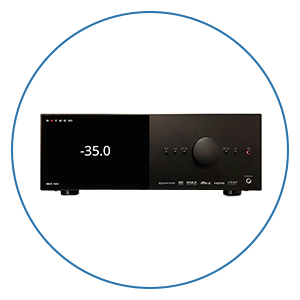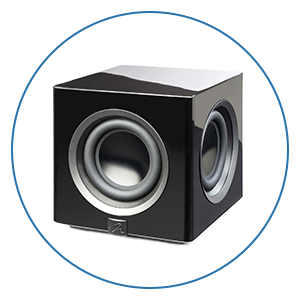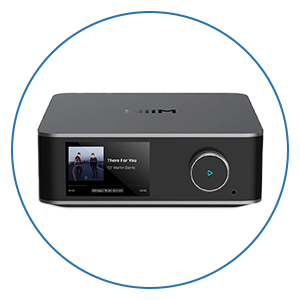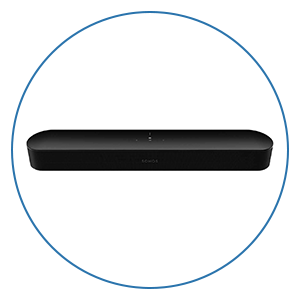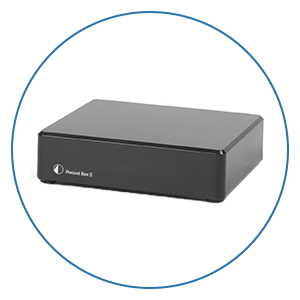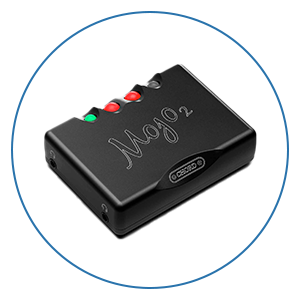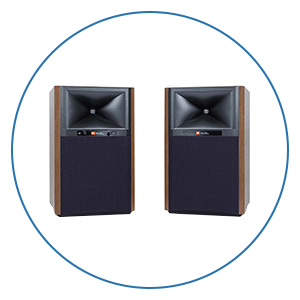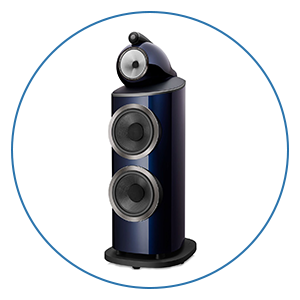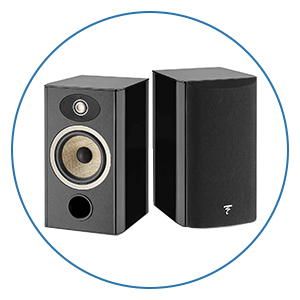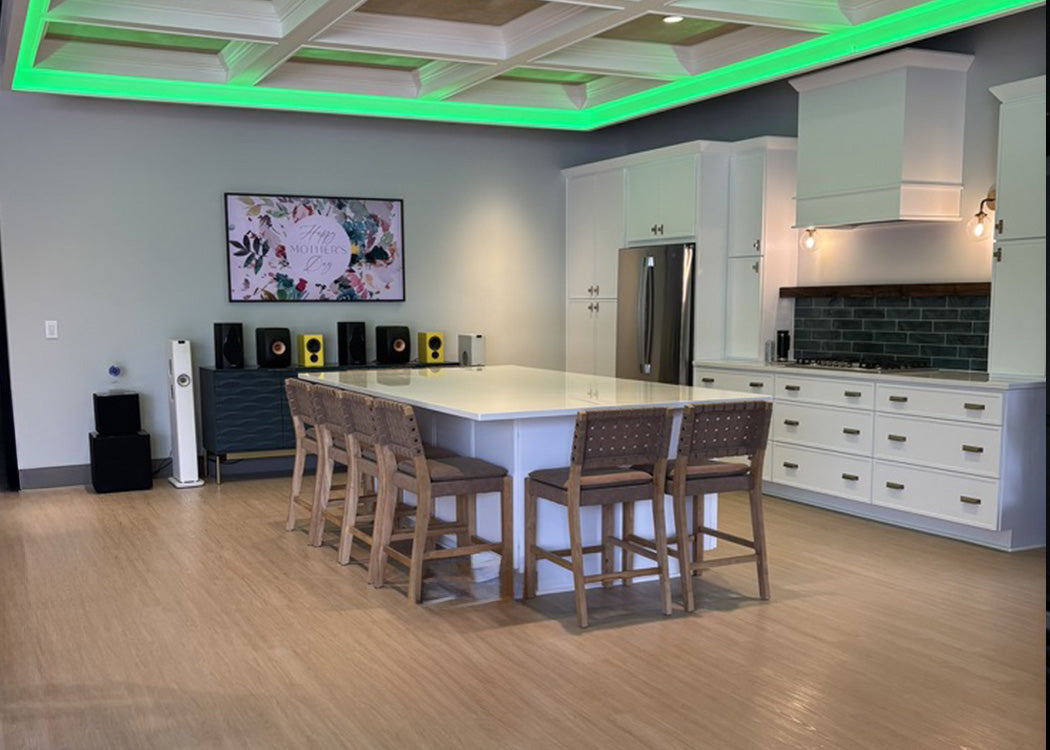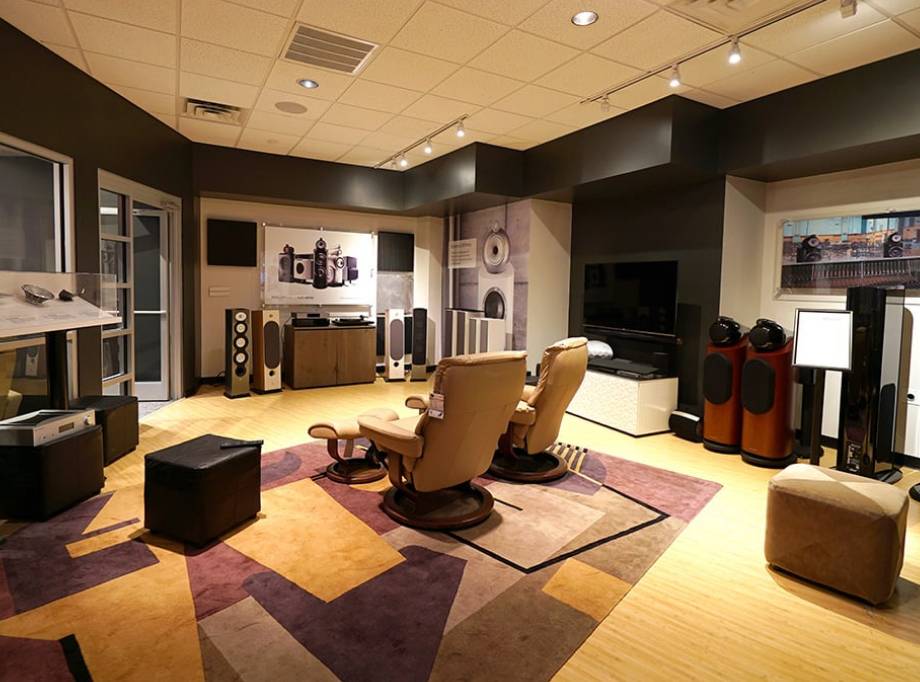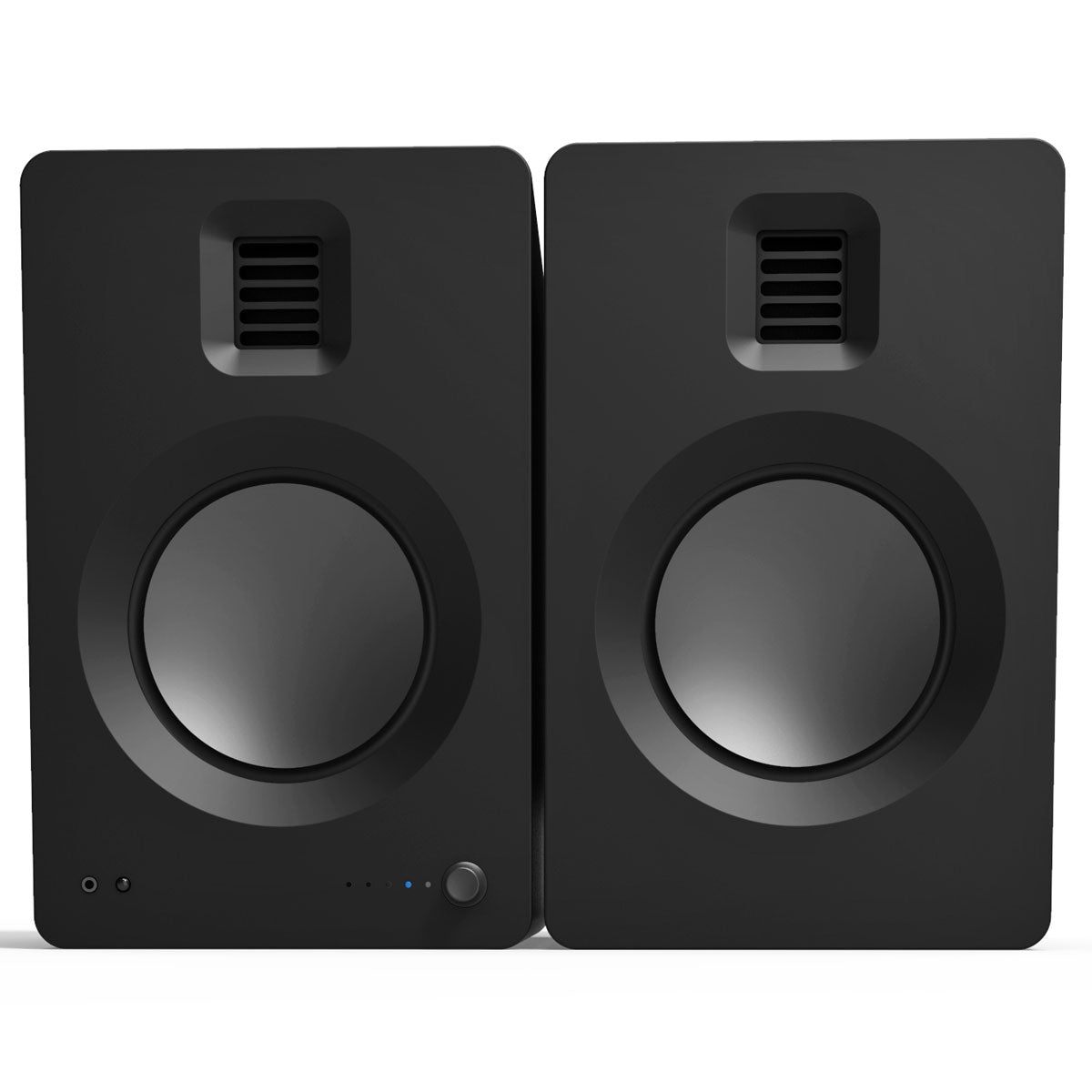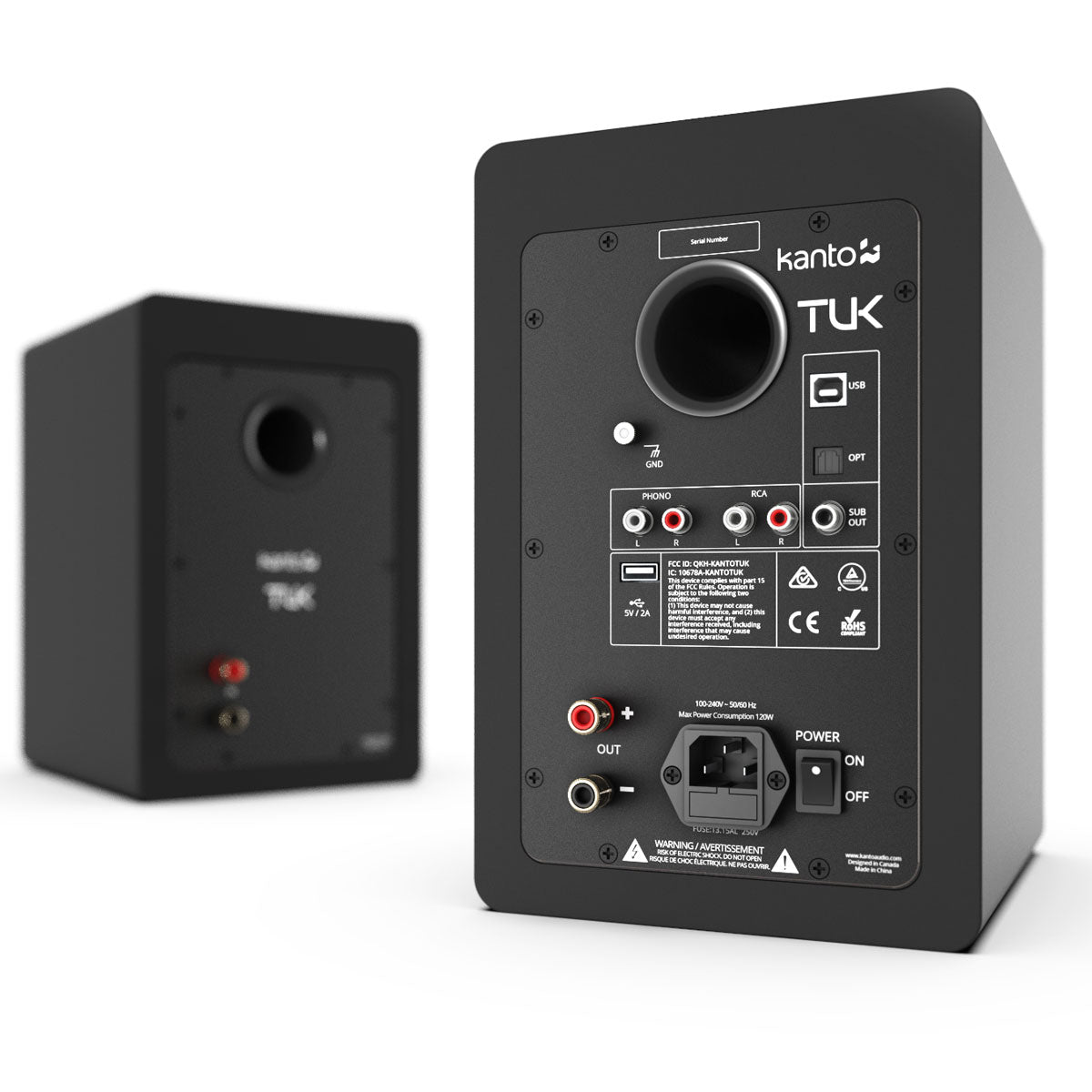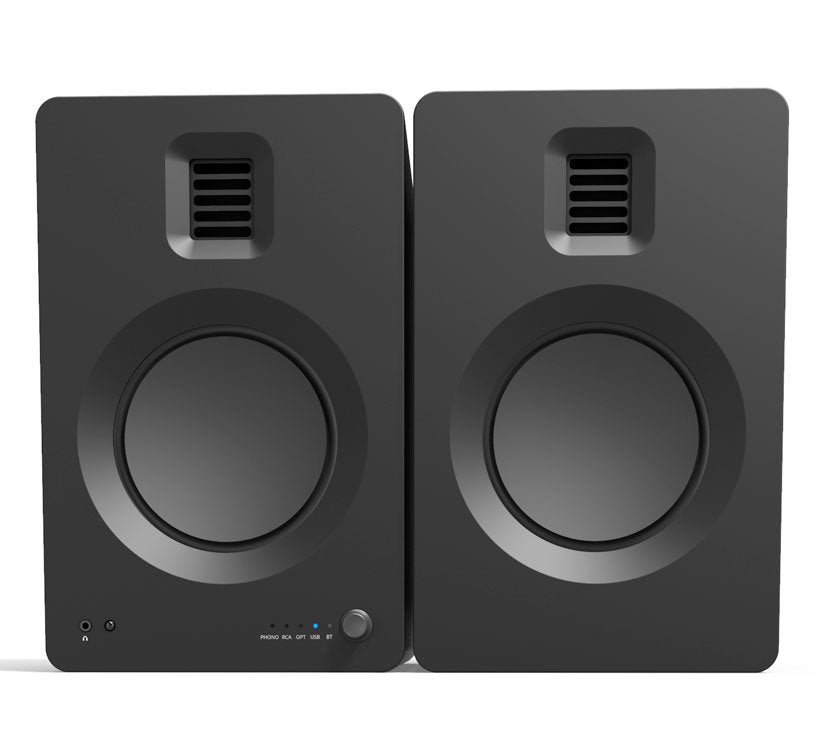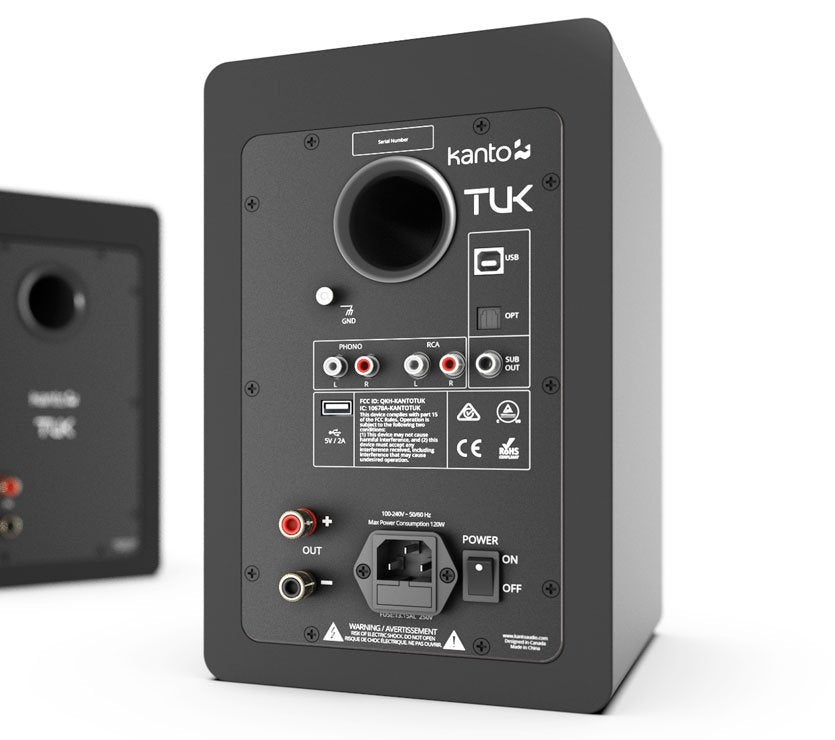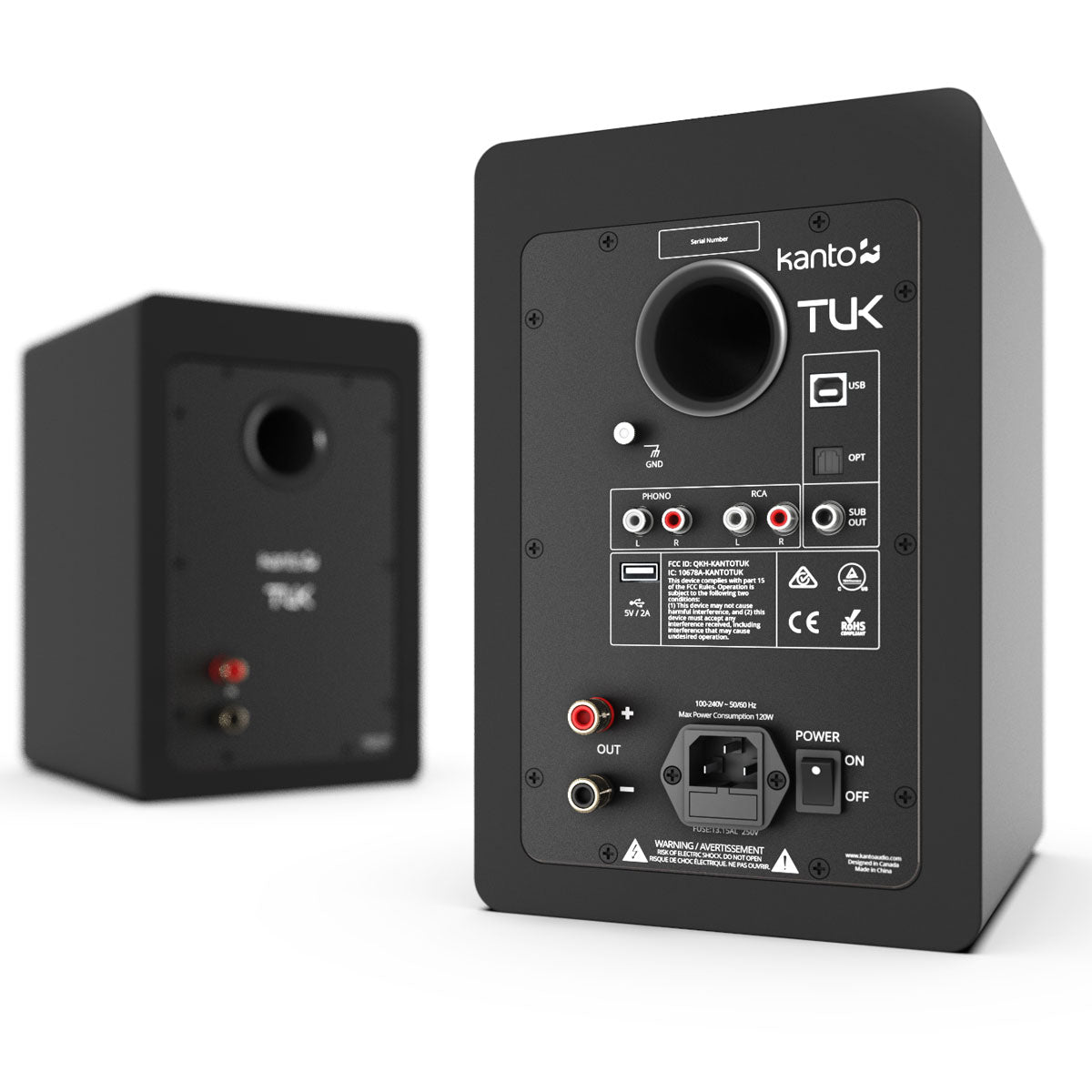Kanto TUK
Couldn't load pickup availability
Free Shipping On All Orders, No Minimums.
We offer free 2-day shipping on most products within the continental US.
Weekdays - Orders placed by 2pm EST ship same day. Orders placed after 2pm EST will ship the following business day.
Weekends - Orders placed on Saturday and Sunday will ship Monday.
Orders requiring motor freight delivery may take more than two business days. Once your order has shipped, you'll receive a shipping confirmation email with a tracking number for easy tracking.
Orders that contain items that are currently backordered, special order, or out of stock will ship complete once all items are in-stock unless otherwise requested.
If you need it faster, you will have the option of choosing a quicker shipping option when you checkout on the website.
At this time, we do not ship internationally and orders to Hawaii and Alaska may incur an additional shipping charge. Please contact us at 888.899.8776 or email support@audioadvice.com to confirm.
Rerouting and Address Changes
We cannot make ANY address changes once an order is placed. If you are unable to accept delivery of your package as ordered, we will need to cancel your order, return the package to sender and have you replace your order through our website.
Keep the Box
We suggest you keep the shipping box or boxes for at least 30 days. It is actually a great idea to keep boxes for audio products for the life of the product. Having the box and all packing will increase the trade-in value should you decide to move up and they are handy to have should you ever need to send the unit in for repair.
How To Receive a Motor Freight Order
The trucking company will contact you to schedule a convenient time to deliver the order. Please note that you must be present for delivery.
Visually inspect the box to make sure you see no signs of damage. If you notice any damage at all, take some pictures with your phone and make a note of them on the delivery receipt the driver will ask you to sign. If it is obvious that the product is damaged, please refuse the order and contact us immediately at 888.899.8776 or email support@audioadvice.com.
Open your box as soon as possible and inspect the product for damage and contact us if you find anything wrong.
FedEx Freight Service Comparison
| Feature / Service | Scheduled Curbside Delivery | White Glove Delivery |
|---|---|---|
| Scheduled delivery appointment | ✔ | ✔ |
| Delivery location | Ground level only (garage, front door, loading dock) | Room of choice, any floor |
| Delivery team | 1 person | 2 people |
| Placement inside home/business | ✘ | ✔ |
| Upstairs / downstairs delivery | ✘ | ✔ |
| Unpacking | ✘ | ✔ (upon request) |
| Packaging removal | ✘ | ✔ (upon request) |
| Assembly / installation | ✘ | ✘ |
| Old item removal | ✘ | ✘ |
At Audio Advice, we pride ourselves on customer satisfaction. We'll bend over backward to make sure you're 100% satisfied and we won't accept anything less. We offer 30-day hassle-free returns and personalized service from real, live people.
If an item doesn't meet your expectations, you may return or exchange it in its original condition and packaging within 30 days for a full refund, minus shipping fees. Items shipped back in like new condition through standard shipping carriers will only incur a flat fee of $15 to return. If the items were initially shipped through free scheduled delivery via motor freight (commonly referred to as LTL), returning them will result in return shipping fees starting at $150. These items include but are not limited to, oversized items such as TVs, certain subwoofers, floorstanding speakers, furniture, and most items weighing over 75 pounds. Return fees will also apply for exchanges. We want to treat your system as if it is our own and want you to be completely satisfied with your purchase.
Please see the instructions below. We only accept returns for any product purchased directly from our website. If merchandise is not returned in its original condition or is missing packaging, manuals, accessories or other parts, or the resale value of the product has been impaired, a partial refund will be given and calculated on a case-by-case basis.
Non-Returnable Items
The following items cannot be returned or cancelled:
- Special/Custom Order Items
- Open Box Products
- Gift Cards
- In-ear headphones cannot be returned once the packaging has been opened due to personal hygiene reasons. Please contact our customer care team if you'd like help choosing.
-
Turntables With a Broken Stylus: All turntables ship out with the stylus intact. If you return a turntable or phono cartridge with a broken or missing stylus you will be subject to a return fee. Please be careful when setting up your turntable and contact us with any questions.
Is It Easy To Return An Item?
Yes, simply give us a call at 888.899.8776 or you can email our support team at support@audioadvice.com. Many times our team of experts can help figure out why the product might not be working like you expected and get things fixed over the phone, so don’t be surprised if we ask a few questions, we love troubleshooting!
If our tech help can not make you happy, we will email over a return shipping label with a Return Number.
Hopefully, you saved all of the original item’s box and packaging inserts. You will want to pack back up your return or exchange in the same way it came out of the original box. Once you have everything packaged correctly, tape the box on the top and bottom to assure it stays together. If Audio Advice shipped the item to you inside a second box, it's a good idea to use that same extra box to help prevent damage on its way back to us. To avoid it accidentally coming back to you, use a magic marker to cross out the old shipping label or just tear it off.
The return shipping label we send you will have our address on it, just make sure you take the box to the right shipper (UPS, FEDEX, or USPS) as per the label.
If you are close to one of our stores, please let us know if it is more convenient for you to return it to us directly. You will still need to get a return number by contacting us and shipping and/or restocking charges may apply.
When Will I See My Refund?
It usually takes around 7-14 days for the refund to show up on the payment method you used. We do inspect all returns for damage and accuracy of the item inside the box before issuing a refund. Some items may be subject to shipping and restocking fees.
Can I Exchange My Purchase For Something Different?
Sometimes those big speakers just don’t fit in the room or you might have bought a small subwoofer and later found out you’d love a bigger one. If you would like to make an exchange within 30 days of receiving your item, just give us a call at 888.899.8776 or email support@audioadvice.com and we will help work out the details. Additional shipping charges and return costs may apply.
How Do I Cancel An Order?
If the item has already shipped out or is a special order item, it is not possible to cancel the order. Please contact us at 888.899.8776 or email support@audioadvice.com to start the return process.
What If I Find Shipping Damage?
We need to know right away about any shipping damage. Please contact us at 888.899.8776 or email support@audioadvice.com within 48 hours of your delivery so we can get the ball rolling on making things right. It’s very helpful to take some pictures and email them to us if possible.
Can I Refuse A Shipment?
You can, but unless the item is damaged, shipping and restocking fees will be deducted from your refund. If your item arrives damaged and you are lucky enough to be there, snap some quick pics and refuse the order. Then contact us so we can get a replacement on the way.
What Happens If My Order Is Defective?
This is actually pretty rare, most consumer electronics work fine out of the box 99.9% of the time. We’d like for you to contact us first by calling 888.899.8776 or email support@audioadvice.com so we can help get to the bottom of things. If your item is indeed defective during the first 30 days, we can usually exchange it for a new, replacement unit.
What About Service After 30 Days?
Audio Advice has a great relationship with all of our brands and can help you with warranty service by the brand after our 30-day guarantee period. Even after the warranty expires, we can arrange for service by the brand on products purchased from Audio Advice. Just call 888.899.8776 or email support@audioadvice.com.
How Do You Determine A Restocking Fee?
You may not believe it, but sometimes we receive items back that were put in the box with zero packaging and are completely destroyed or are missing many of the pieces that came with the item. We also track serial numbers and will get back different serial numbers. We’ve even seen different items than what we shipped out be returned. However, it’s very important to package your return properly so that nothing goes missing or gets damaged in shipping, which will result in a restocking fee or even no refund at all. If a product is opened and the market value of the product is reduced, then a restocking fee may be applied to the cost of restocking and the reduced market value of the product. The bottom line is if you treat us fairly, we will do the same.
Audio Advice strives to provide industry-leading support and service while also maintaining the lowest prices available on products for our customers. We work hard with our vendors to bring our customers the best products at each price point. As a part of that process, we work with our vendors to provide the lowest pricing in our stores and on our website.
Our prices should always be the same as any other authorized dealer, including big-box retailers and major online retailers.
If you believe that you have found a lower advertised price from a legitimate authorized seller, call us and let us know so we can make sure we can correct any inadvertent error on our side. As a matter of policy, we update our prices automatically if a vendor changes its authorized pricing policies, so we generally have the best prices all the time. Increasingly, there are knock-off copies of products online, usually sold by non-authorized dealers.
Please be sure that the item meets the following conditions:
- The item is brand new, in stock, and available for purchase
- The item has the identical model number, color, etc as the item on our site.
- The seller is an authorized dealer
As always, our goal is to provide a terrific customer experience, including industry low prices. We appreciate your support.
Overview
Delivering clarity and performance that put it in a class of its own, TUK is designed to push the limits on what a bookshelf speaker can achieve. Fine-tuned with onboard DSP, its high-performance AMT tweeters and 5.25” aluminum drivers produce sparkling highs and rich bass, bringing life to all your source material. Its active crossover further improves low-end resolution by filtering out sub-80Hz frequencies when connected to a subwoofer. Outfitted with dedicated phono, RCA and Optical TOSLINK inputs, a built-in USB DAC and headphone amp, and Bluetooth 4.2 with aptX HD and AAC codecs, TUK provides the flexibility you need to enjoy all your devices.
The High Notes

High Tech Drivers

Inputs for Everything

Great Control Feature Set
Company & Product Overview
We first heard the Kanto products at CES in 2016 and were very impressed with their sound and build quality. Plus the fact that most of them had a built-in phono stage made our vinyl side smile. Their YU series of powered speakers have proven to be a great value for the money.
Kanto was founded by David Reid, who grew up in a room where music was constantly playing. His dad had the audio bug and loved to play around with different combinations of gear to try and reach better and better sound. This led David to become a big lover of music and a tinkerer consummate. He worked in the telecommunications industry for many years and there took on the skills needed to design and build consumer electronics.Kanto hit the market in 2007 with an iPod docking station. It won a number of awards, which helped launch the company. Their goal was to create high-performance audio products that were very affordable. They followed up the iPod dock with a line of powered speakers and other accessories. Another Kanto goal, which is a little unusual in the audio space, was to create products that looked as good as they sound. They have so many color options on their speakers, you almost feel like you are in a paint store, which is pretty cool and unique.
Following up on the success of their YU speakers, Kanto wanted to come out with a speaker that offered far more performance, yet stay within the compact size of a typical powered speaker. We have to say, they have been working on this product for quite a while as we saw a prototype at CES 2017. Audio Advice was lucky enough to get a pre-production model of this new speaker, called the TUK, for testing. The TUK is a very compact powered bookshelf speaker, that is just packed chock full of technology.

Design & Build Quality
The Kanto TUK gets its name from a small town in northern Canada, Tuktoyaktuk. This little hamlet sits on the shores of the Arctic Ocean and is home to some spectacular Aurora Borealis displays. We suspect someone from Kanto spent time here as they say they want this speaker to give the same excitement to your ears as the Aurora does to your eyes. The name also pays homage to the fact all Kanto products are designed in Canada.
The TUK is a small speaker that is under 11” tall, about 8” deep and 7” wide. It is available in two matte finish colors, black or white. Like many small speakers, the TUK is ported, and in this case, the port is on the rear of the speaker. You’ll get some grills that attach with hidden magnets, although we feel the TUK is very sharp looking without the grills so you may want to leave the grills in the box.
You’ll only need sources to make a complete system with the TUK as it is self-powered with a built-in DAC and phono stage, plus some pretty cool DSP circuitry we will cover in the tech section.

Features & Technology
Most bookshelf speakers this size are a two-way design, and the TUK is no exception, however, the drivers they use are pretty exceptional! Rather than a typical dome tweeter for the high frequencies, the TUK uses an AMT tweeter. AMT stands for air motion transformer. This technology was invented by Dr. Heil back in the early ’70s and was famous in a speaker he designed called the ESS AMT1. An AMT tweeter uses a folded membrane, which gives you a lot of surface area in a small space. The sound is effectively “squeezed” out of the driver. The result is far less distortion and a high-frequency driver that can get down lower in frequency than most tweeters. AMT tweeters are typically more expensive than a conventional dome tweeter. Kanto chose them for the TUK for their ultra-fast, low distortion characteristics.
The woofer of the TUK is also pretty special. It is made out of aluminum. Kanto obviously wanted to spare no expense to squeeze great sound out of a small package by using this much more expensive driver material. Aluminum has very high rigidity and low mass which is ideal for a bass driver. The result is an ability to play much louder with less distortion. An important factor when you have a small box!
You’ll find plenty of input flexibility on the TUK. First, they include a built-in phono stage for moving magnet cartridges. We were also pleased to see them add an additional set of analog RCA inputs. Many companies just have one set with a switch to make them either phono or line-level analog, but you can do both with the TUK. Connecting up to a TV is easy too with the optical input. Computer audio is no issue either with the USB connection right on the back, plus the TUK has a pretty good built-in USB DAC. So let's see, that is a phono connection, a legacy CD player, tape deck or tuner input, an input for your TV, and a way to connect your computer. What more could you ask for? Yes, Kanto covered the one last possibility with a Bluetooth® 4.2 aptX™ HD connection. This is the highest resolution format available right now for Bluetooth.
That is a really full slate of inputs, but there are a couple of other ports on the back. You’ll be able to charge your phone up with a USB charging port built into the rear. Adding a subwoofer is also really easy with the addition of a subwoofer out on the rear of the TUK. Most powered speakers with a subwoofer out simply send an audio signal out to the sub but do not do anything to take the bass away from the speaker when the sub is connected. In the high-performance audio world, this is a big deal. When you route the bass away from a small speaker, the typically small woofer is not asked to move as far since those deep bass frequencies are no longer there (they got sent to the woofer). The end result is not only better bass, but a far more open and transparent midrange presentation. This type of speaker combination with a small pair crossed over to a subwoofer gives you the ability to play things a lot louder as well. When a small woofer is not being asked to move as far, it can put out more midrange with less breakup on loud passages. Kanto gives you a way to engage a DSP (digital signal processing) function that kicks in an 80hz crossover, sending only 80hz and above to the TUK and the tones below 80hz to your sub. You’ll get less distortion, cleaner mids and highs, and the ability to crank things up a bit when you couple a sub to the TUK. A great feature!
Another pretty neat feature the TUK has we have never seen on a powered speaker pair is the ability to flip channels. Powered speakers all have one speaker that has the amp built into it for both speakers and all the connections. The other speaker simply connects up with speaker wire. One of the speakers is designated as the left and one is the right and you really can not change this. The disadvantage of this is a case where your power outlet and components are closer to the speaker without all the connections. Kanto gives you a way, by holding down a button on the supplied remote control to reverse the channels should you need to, very cool.
To reduce power consumption, Kanto built an auto power on/off feature. This will power down the speaker if it does not see a signal after about 20 minutes, a good way to save a little power. You do have the option of turning this off should you wish with the remote control.
Speaking of the remote, it's a nice little unit that feels good in the palm of your hand. Along with the normal functions, you get some pretty unique features. Many new powered speakers give you an adjustable bass and treble control these days. And most will have a single button to reset them both to flat. Kanto took things a step further. First, you can select the bass and treble flat reset separately. This is kinda neat should you want to back off on the treble without changing what you had dialed in for the bass. Another first is the ability to assign different bass and treble settings for each input. The TUK comes defaulted to where they are global across all inputs but with a couple of button presses, you can make them unique for each input.
There is also a sub button on the unit. This will turn the subwoofer outs on and off. For late-night listening, if you have neighbors or a sleeping baby nearby, this will let you still hear some music, without the deep bass. Or for late-night and private listening, the TUK has a headphone amp built-in with the connection on the front.
If you wish to reset the BlueTooth connection there is a quick button for that on the remote as well. The remote also has some basic transport control functions when you are in BlueTooth mode.
We did have one gripe about the remote. Since the TUK has so many inputs, it would have been nice to have direct access to them. The remote just has a single input button that toggles through them. There is a tiny display on the front of the TUK to indicate the input, but we would have preferred direct access.
If you can’t find the remote, the TUK has basic functions of on/off, volume and input selection built into the small knob on the front panel. We have to say, the feature set and tech inside the TUK is very impressive. Of course, it all comes down to the sound which we were really curious to dive into after studying all of the cool things the TUK can do.

Performance
For testing purposes, we used a MacBook for USB, a U-Turn table for vinyl, and our phone for BlueTooth. We also had a Kanto Sub8 which is their 8” powered subwoofer to use for testing out how well they paired with a sub using their special DSP. The first thing we did, and we’ve learned this in the past from other small powered speakers, was to plug in a CD player, put it on repeat and let it run the TUK’s pretty hard for a couple of days to break in the drivers.
We put them in a room that was a bit lively to try and recreate what might be a typical room they would be in and having the treble and bass controls were very handy as we backed down the treble 1 click and everything sounded very natural. We had just a shade too much high-frequency energy due to the room before we backed it down.
After a few tracks, we were grinning ear to ear. The TUK is just flat out fun to listen to. They are extremely dynamic which pulls you into the music. Percussion and any other instruments with a lot of dynamics jumped out into the room. This was especially noticeable in the first 2 minutes of Dave Matthews “Grave Digger” live at Citi Field. The intro drum solo was very impressive.
We switched to an old rock classic, “Pink Houses” from John Mellencamp and had the exact same experience with anything dynamic. “Take Five” by Dave Brubeck showed us how well the TUK imaged. The soundstage was very wide. Vocals on “Call Me” by Hans Theessink were also very impressive. Even deeper kickdrum sounds were handled quite easily by this tiny little speaker. They reach down quite deep for their size.
Changing over to some light jazz, again, we wanted to go from explosive dynamics to see how well they revealed the subtle details of the music. Again, the TUK was very impressive letting us hear harmonics of a clarinet and brush strokes on a cymbal.
Next, we put on an old Hendrix cut, “Purple Haze” and cranked them up. They were able to play very loud and totally fill up the roughly 22’ by 16’ room we were in.
Overall, by themselves, with no sub, the TUK is a real winner! Of course, we had to try out adding a sub. Holding down the Sub mute button for about 8 seconds kicks in the crossover. We adjusted the output of the Kanto Sub8 to match well and played most of the same tracks over again. While it was not a complete transformation three things really stood out. Bass, of course, went deeper with the sub. However, the midrange opened up quite a bit on most passages. With the sub engaged they could also play several dB louder before sounding strained. If you decide to add a sub to the TUK’s, be sure and play around with its position and spend some time tuning in the sub level, it will be well worth it.
Kanto has done a fantastic job of creating one of the most dynamic and engaging small powered speakers we have heard in a long time. Although they are not inexpensive for powered speakers, they deliver sound far above their price point.
Overall Recommendation
If you are considering putting together a compact system that has the ability to start to play in the big leagues of audio, you should put the TUK on your list. It has a plethora of inputs, sounds fantastic, and takes up very little space. You don’t really need a subwoofer to get great sound either, but it will make a fun upgrade down the road. Pull out some dynamic tracks and you’ll be grinning like we were!
Details & Specs
AMT Tweeters
TUK utilizes high-performance AMT tweeters to deliver brighter, more accurate highs. Their wide horizontal dispersion also offers improved stereo imaging and soundstage.
Aluminum Drivers
Due to their high rigidity and low mass, TUK’s aluminum drivers operate at optimal efficiency while reducing distortion at higher volumes.
DSP Controlled
TUK features integrated digital signal processing (DSP), designed to optimize audio quality and provide greater accuracy in sound reproduction.
Advanced Connectivity
Along with Optical and RCA inputs, TUK includes an independent phono input for your turntable, a USB DAC, a dedicated headphone amp, and Bluetooth 4.2 with aptX HD and AAC codecs for high fidelity streaming.
Active Crossover
When enabled, TUK’s active crossover filters out frequencies below 80Hz and sends them directly to a connected subwoofer. Off-loading this portion of the frequency range further improves resolution while reducing distortion.
Full Control
Packed with functionality, TUK’s remote allows you to make quick input, volume, tone, and balance adjustments, as well as control playback when streaming via Bluetooth.
Specifications
Drivers
- 28 mm x 35 mm AMT Tweeters
- 5.25" Aluminum Drivers
Audio
- Class D Amplifier
- 260W Peak Power (130 Watts Total RMS)
- Frequency Response: 50 Hz – 20 kHz
Inputs
- Bluetooth® 4.2 with Qualcomm® aptX™ HD and AAC Codecs USB DAC
- Dedicated Phono Pre-amp RCA Input
- RCA Input
- Optical (TOSLINK)
- 3.5mm mini-jack AUX
Outputs
- Headphone
- Subwoofer
- USB Charge 5V 2A
What's In The Box:
- Remote with Batteries
- 2 x Magnetic Grilles
- Power Cord
- Speaker Wire with Banana Plugs
- 3.5mm to RCA Cable
- USB Cable
- 8 x Rubber Feet
- Manual
Approximate Dimensions
- Height: 10.9"
- Width: 7"
- Depth: 8.5"
Approximate Weight
- Passive: 9.9 lbs
- Active: 11.1 lbs
- Threaded Mounting Hole: 1/4"-20
- Shipping: 22.50 lbs
Warranty Information
- Manufacturer Warranty (authorized online retailer): 2 Year Limited Warranty


